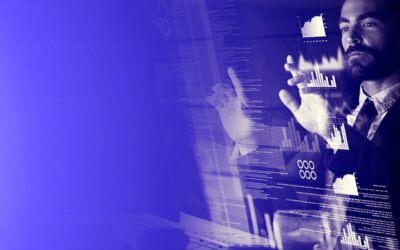Data analysis has been around since the last century, but when it came to vast amounts of it, there weren’t minds—or later computers—powerful enough to process it all. After some developments in computing power, the data could at least be stored somewhere, but the problem of analyzing it still stood.
Nowadays, with the developments in Artificial Intelligence (AI), machine learning, and data analytics methods, the issue is resolved. Companies can get powerful insights from data, and it doesn’t matter the amount; the more data is available, the better the results.
With that said, this is how big data and data analytics are disrupting industries.
HEALTHCARE
Healthcare is turning into an epicenter of technological developments, not only because it is a matter that concerns everyone, but because it has the goal to become more accessible to all social groups. Healthcare is expensive, and optimizing it helps reduce costs.
At the same time, the healthcare sector generates billions of data points around the world—if put to use, it could make a tremendous difference in the world. For example, a complete sequence of the human genome can be 100 gigabytes of raw data. This is the information of one tiny particle compared to all our bodies.
By using big data and data analytics, doctors will be able to use software that can compare a patient’s symptoms to a database of thousands of similar symptoms and give a possible diagnosis in a couple of seconds, where a doctor would take weeks if not months. In the future, by combining big data and AI, scientists could even find cures to common diseases in the blink of an eye.
TRANSPORTATION AND SHIPPING
The transportation and shipping industry has many issues that cause losses to the companies. Every time a product gets lost on the way to the customer or shipping cargo is delayed, it reflects poorly on the business. There are also thousands of shipping companies, and the process of keeping track of all of them is tedious and almost impossible.
Overall the shipping industry is so big that the methods they have used until now aren’t working at their best; they require a lot of human intervention, which creates more room for human error. In the case of transportation, the processes are more automated, but there are still problems, like when airlines have errors and sell more tickets than the plane can carry or when the system has a glitch and tickets are sold at less than half the price.
Big data analytics can help to keep track of the bigger picture for each of these systems and know which method yields the best results.
For example, if a bus company wants to implement a new technology to track each vehicle, they could use big data analytics to see if it is giving results and their investment is worth it. It can also be used to improve traffic management by stopping cars from transit at certain hours to avoid traffic jams.
MARKETING
Marketing is one of the industries that have been most disrupted by big data. In fact, one of the first mainstream uses for this technology was to create targeted advertisements. It began with ads on social media, where companies like Facebook and YouTube use the data collected during your activity on the app or website to create a profile of your preferences.
Now, it has come as far as collecting data from your devices and always hearing what you say around your smartphone to use it when showing you advertisements. Today, there isn’t a marketing strategy that doesn’t use big data to get results. Digital marketing is driven by data, and new software is launched every year to take the next step.
The downside of this big data is that ads are everywhere, and many people are so tired of them that they don’t even pay attention to them anymore. Also, there is a substantial gray zone in regards to user’s privacy and how far companies are willing to go to get results.
FUTURE TRENDS
Big data describes a massive amount of data, but it means nothing if we don’t use AI, machine learning, and data science to get insights from it. So, big data became a powerful tool after the developments in machine learning and data science of the last decade.
But big data will continue to grow, and these are the future trends:
Augmented analytics
Augmented analytics is the use of AI and machine learning to analyze raw data and find patterns and insights. A computer makes all this on its own, and it doesn’t require a Data Scientist to intervene.
With the use of this technology, data scientists and engineers put effort into developing this software, and, once running, they can concentrate on other tasks that don’t take so much of their time. It allows for more in-depth analysis and simplifies the process.
Data on the edge
This is a new trend that many companies are evaluating where the data analysis occurs on the actual devices. It means improved hardware for devices that users have at home so they can manage the data analysis without the need to go to the cloud.
The issue with all devices connected to the cloud is that they can have delays. They depend on the Internet speed and the location of the cloud’s servers. By doing most of the essential processes on the device itself, the responses are instantaneous, improving the user experience.
IN SUMMARY
Big data isn’t a technology on its own, but, combined with other powerful tools and methods, it becomes a real force. Almost every company nowadays uses big data analytics to make the smallest decisions, design marketing strategies, analyze risks, and more. It is already disrupting healthcare, transportation, digital marketing, and many other industries in a way that we can’t imagine.



